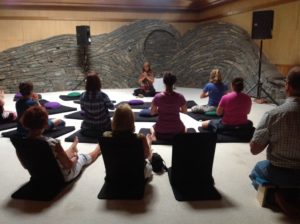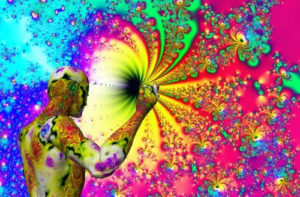
By John M. de Castro, Ph.D.
For death,
Now I know, is that first breath
Which our souls draw when we enter
Life, which is of all life center.
~Edwin Arnold
The beginning of the month of November is marked by a variety of celebrations throughout the world including the Day of the Dead and Halloween, the night before All Souls Day. Halloween was actually a pagan holiday called Samhain that was coopted by the Christians. But, they are all celebrations of those who have passed away, a celebration of our ancestors, a celebration of the dead. This might seem a bit macabre to be celebrating death. And, indeed, the macabre is an integral part of the celebration.
It does seem to be strange, however, that death is celebrated when it is in fact the second most frequent fear. So why do we celebrate? Perhaps Mark Twain put his finger on it “The fear of death follows from the fear of life. A man who lives fully is prepared to die at any time.” The celebration is not really about death. It’s actually a celebration of life. Death reminds us that our lives are limited. We celebrate to help us experience life while we still have it. As pointed out by Angelina Jolie “There’s something about death that is comforting. The thought that you could die tomorrow frees you to appreciate your life now.”
These ideas are well stated in the Zen Evening Gatha that is recited every evening in Buddhist monasteries.
Let me respectfully remind you,
life and death are of supreme importance.
Time swiftly passes by and opportunity is lost.
Each of us should strive to awaken.
Awaken. Take heed.
Do not squander your life.
Rather than not squandering our lives, many of us live in a state of unaware numbness, going through the motions of life, but not really living. Focusing on an anticipated happiness in the future or ruminating about past issues. We seem to not comprehend that the essence of life is the present moment. That is all life is, a long-lasting present moment. It is the only time that we can actually live. So, if we do not relish what is in the present moment, we might as well already be dead. This is where contemplative practice and mindfulness comes in. These practices help us to learn to live fully in the present, experiencing what life has to offer.
Somehow, in our everyday lives we see the present as unsatisfactory or boring. But, nothing could be further from the truth. If we truly do focus on the present we are often surprised by its richness. Even focusing on something simple like our breathing, really paying attention to it in all its exquisite detail, we can see that this simple experience is replete with beauty and nuance. We can feel the delicious sensations of our body in action. We can see how remarkable this simple process really is. We can see how essential it is to our very existence, yet we take it for granted. And that is only breathing. There is so much in the present moment that when we carefully look at it we’re amazed as to how we could ever have missed it. Life is a miracle. Life is special. Only by being mindful can we deeply immerse in the wonder of life.
Halloween and the Day of the Dead is also an opportunity to recognize our ancestors without whom we would not exist. It’s a time to view how interconnected we are to all of humanity. All one has to do is follow the family tree back a few generations to see how widespread our connections are throughout time, culture, religion, race, etc. If we go very far back, we can see that everyone is connected to everyone else somewhere in our ancestry. Also, by looking at our ancestors and understanding what they have contributed to our existence, we can see how important it is for us to commit to future generations to promote understanding, peace, and prosperity for the future.
But what about death itself, should we be as afraid of it as we are? It is helpful to remember that life is bounded by birth and death. Do we fear the state we were in prior to birth? In fact, many psychologists think of birth, the entry into life, as a traumatic event. It involves leaving a very peaceful state for the chaos of life, what William James called the “blooming, buzzing confusion”. So, maybe we should fear birth and not fear death which may simply return us to the peaceful prenatal state. Perhaps we should look forward to it.
The important thing and the message of Halloween and the Day of the Dead is to experience this precious time of life that we’ve been given. Indeed, many have suggested that the entire purpose of life is simply to experience it. So celebrate life and don’t worry about death. Enjoy Halloween and the Day of the Dead in the present moment. Stay in the present moment and be truly alive, celebrate every experience, and when death comes welcome it having experienced life to its fullest.
“On no subject are our ideas more warped and pitiable than on death. Instead of the sympathy, the friendly union, of life and death so apparent in Nature, we are taught that death is an accident, a deplorable punishment for the oldest sin, the arch-enemy of life, etc…. But let children walk with Nature, let them see the beautiful blendings and communions of death and life, their joyous inseparable unity, as taught in woods and meadows, plains and mountains and streams of our blessed star, and they will learn that death is stingless indeed, and as beautiful as life, and that the grave has no victory for, for it never fights. All is divine harmony.” ~John Muir
CMCS – Center for Mindfulness and Contemplative Studies
This and other Contemplative Studies posts are also available on Google+ https://plus.google.com/106784388191201299496/posts








